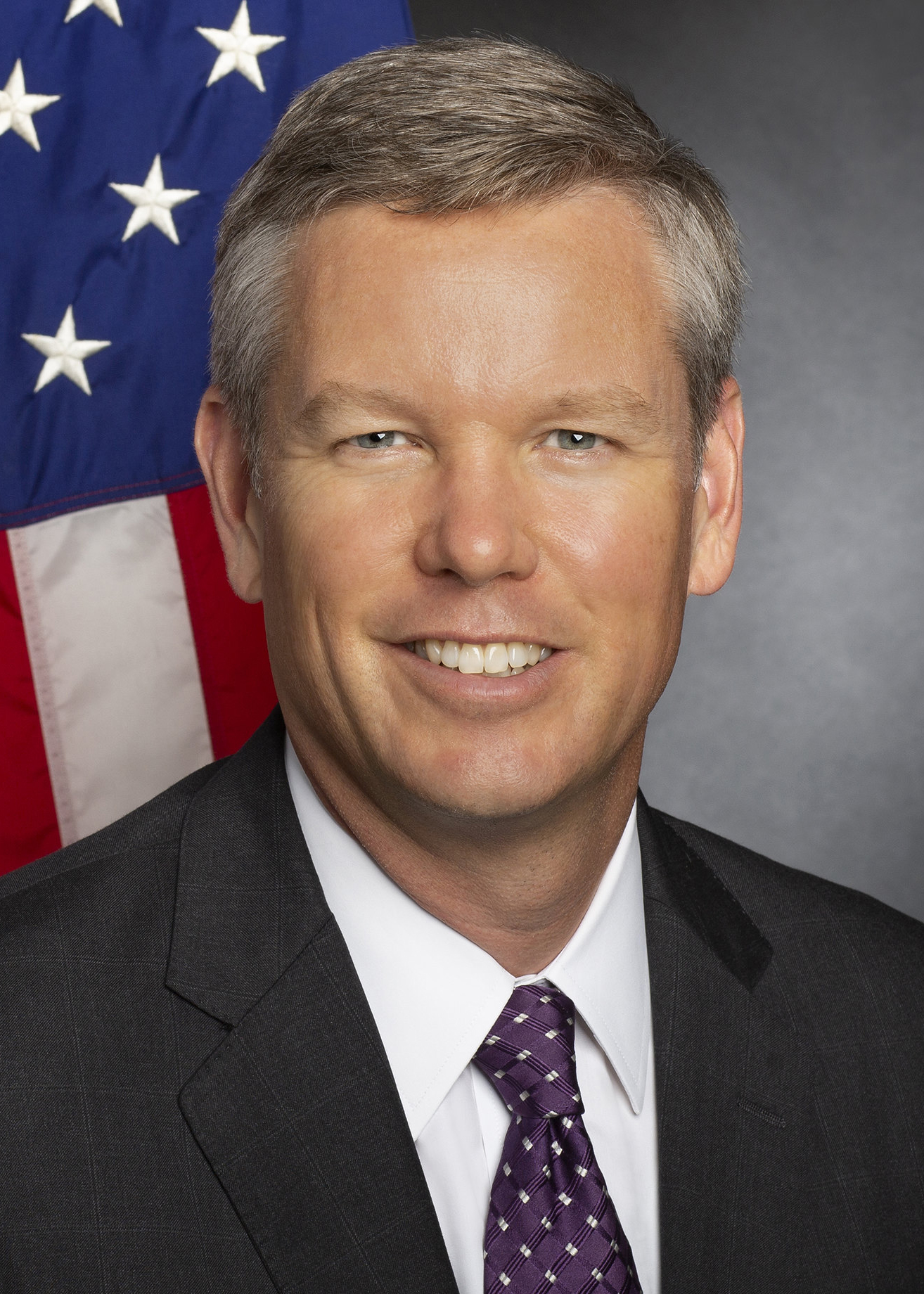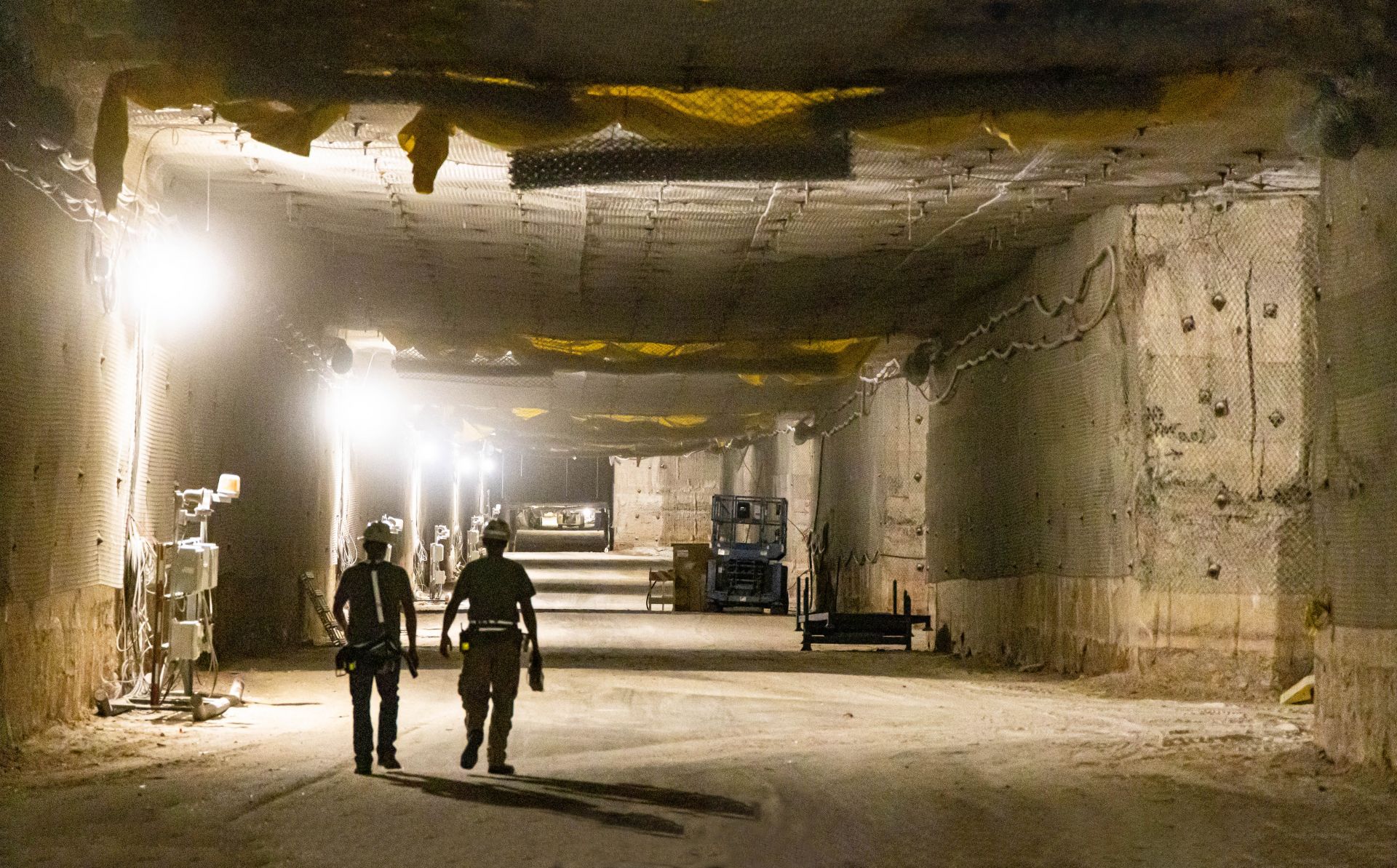Sen. Sue Rezin (at lectern), speaking on H.B. 2473 on Tuesday. (Photo: Sue Rezin)
While an initial bill aimed at lifting the decades-old ban on new nuclear construction in Illinois was vetoed in August by Gov. J. B. Pritzker, the state’s nuclear-friendly legislature is giving the effort another shot, opting to pursue new legislation rather than a veto override.
Concept art of the six-module CFPP at INL, terminated before construction could begin. (Image: NuScale)
Utah Associated Municipal Power Systems (UAMPS) and NuScale Power announced November 8 that they have mutually agreed to end the Carbon Free Power Project (CFPP)—a plan to build a set of 77-MWe pressurized water reactors, called NuScale Power Modules, at Idaho National Laboratory. The reactors were intended to provide power to INL and UAMPS customers in Utah and surrounding states with an anticipated start date of 2029.
The Zion nuclear plant site as it appeared earlier this year. (Photo: Tim Gregoire)
The Nuclear Regulatory Commission has released for “unrestricted use” most of the land on and around where the Zion nuclear power plant once operated in northeastern Illinois. This means that any residual radiation is below the NRC’s limits and there will be no further regulatory controls by the agency for that portion of the property.
Centrus Energy staff posing in front of the American Centrifuge Plant. (Image: Centrus Energy)
Centrus Energy and the Department of Energy announced November 7 that Centrus has produced 20 kilograms of HALEU at the DOE-owned American Centrifuge Plant in Piketon, Ohio, satisfying Phase One of a DOE contract to stand up and operate 16 advanced centrifuges. Centrus will now move on to Phase Two of the contract, which requires a full year of HALEU production at a rate of 900 kilograms per year.
The Belarusian nuclear plant. (Photo: Rosatom)
The second of the two VVER-1200 pressurized water reactors at Belarusian, the sole nuclear power plant in Belarus, has entered commercial operation, Russia’s state-owned atomic energy corporation Rosatom announced last week.
Workers monitor the pouring of melter glass from a control room in Hanford’s LAW Facility. (Photo: DOE)
The Department of Energy’s Office of Environmental Management said crews at its Hanford Site in Washington state have started pouring the first molten glass from a waste vitrification melter into a stainless steel container at the site’s Waste Treatment and Immobilization Plant, also known as the Vit Plant.
Eric Mathet (left), operational lead of the IAEA’s nuclear infrastructure development section, presents the INIR mission report to Antti Tooming, deputy secretary general of Estonia’s Ministry of Climate and head of the country’s nuclear energy working group.
A team of experts from the International Atomic Energy Agency recently concluded an eight-day mission to Estonia, finding that the Baltic state has developed a comprehensive assessment of its nuclear infrastructure development needs, enabling the government to make an informed decision on whether to pursue a nuclear power program.
The Hanford Site’s ETF has been expanded. (Photo: DOE)
The Hanford Site’s Effluent Treatment Facility (ETF) has been expanded and will be able to handle almost 7 million more gallons of wastewater per year once the site’s Waste Treatment and Immobilization Plant (WTP) begins treating waste from large underground tanks.
SRMC’s Dave Olson makes opening remarks to the new class of nuclear operator apprentices and faculty members at Denmark Technical College. (Photo: SRMC)
Eight new hires from Savannah River Mission Completion (SRMC) are taking part in the new Liquid Waste Nuclear Operator apprenticeship class at Denmark Technical College in Denmark, S.C. The goal of the class is to prepare SRMC’s new employees for positions at the Department of Energy’s Savannah River Site, in South Carolina.
The South Texas Project nuclear power plant. (Photo: STP Nuclear Operating Co.)
Constellation Energy announced last week that it has completed its acquisition of NRG Energy’s 44 percent ownership stake in the South Texas Project nuclear power plant.
Workers walk down an underground passageway at the Waste Isolation Pilot Plant transuranic waste repository in New Mexico. (Photo: DOE)
The American Nuclear Society coordinated an effort with eight nongovernmental organizations in asking Congress to update the Environmental Protection Agency’s generic standards for the safe, permanent disposal of spent nuclear fuel (SNF) and high-level radioactive waste.















